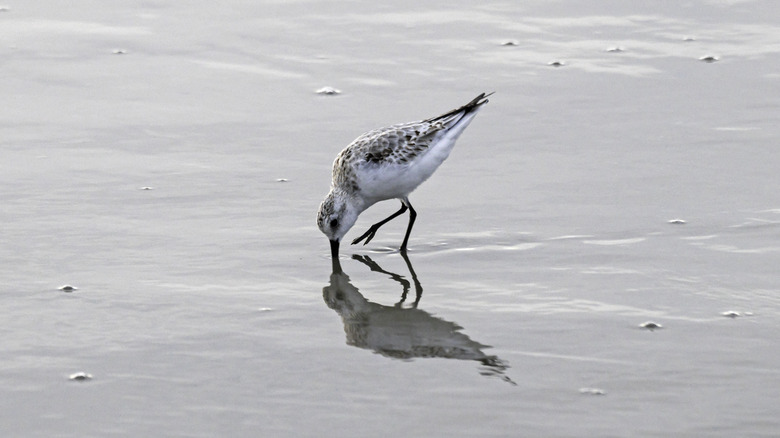Humans Have A 'Seventh Sense' And Scientists Have A Cool Theory Explaining How It Works
We experience everything in life through our senses, but despite millions of years of human history behind us, scientists still aren't completely sure how many of those senses we have. Most of us were likely taught about the five senses of sight, hearing, touch, taste, and smell, but that model is now outdated. There are at least six human senses — the sixth being proprioception, the ability to tell where our body parts are in relation to space — and a recent study proposes we add yet another to that list. This seventh sense is called remote touch, and it enables us to locate objects hidden within other materials without touching those objects themselves.
Researchers from Queen Mary University of London and University College London were the first to prove the existence of remote touch, which was revealed in a study published in IEEE Xplore in October 2025. To test their theory, they buried a 2-inch plastic cube at the bottom of a box filled with sand. Twelve test participants were then asked to find the cube, but they were only allowed to stick the first two knuckles of their index fingers into the sand. This kept their fingertips out of reach of the cube, and yet, the participants were able to locate the buried cubes with a stunning 70.7% accuracy. This shows that humans have the ability to sense objects from a distance by remote touch, which the researchers believe happens through sensing miniscule displacements in the sand.
How remote touch works in practice
The sense for remote touch has been observed in other animals, most notably in shorebirds like sandpipers and plovers. They use their beaks to sense tiny vibrations within the sand, which guide them to their hidden prey. This sense works a little bit like the sense of echolocation used by bats and whales, in which the animal can sense far away objects from the way sound waves bounce off of them. Remote touch is similar, but instead of sensing sound waves bouncing off of an object, we sense a physical material (the sand) moving around an object.
Remote touch could have significant practical applications in the world of science, particularly in the field of archaeology. Understanding and harnessing remote touch could allow us to discover ancient ruins in unexpected places and find long lost artifacts more easily while minimizing the size of dig sites. This would make archaeological digs more efficient and less destructive to the environment.
Scientists are now interested in creating robots that can utilize the sense of remote touch for archaeological digs and geological surveys, but this is proving to be quite challenging. In the recent study from Queen Mary University of London and University College London, researchers found that while humans could locate objects using remote touch with a 70.7% accuracy rate, a robot they constructed only had a 40% accuracy rate. It goes to show how challenging it will be to create humanoid robots when we still hardly know how real humans work.

